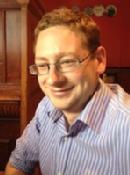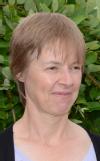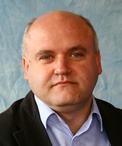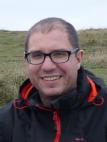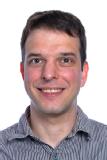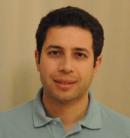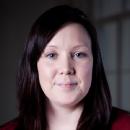Management and Core Team
For general enquires please contact hetsys@warwick.ac.uk
Management Team
|
|
Prof. James KermodeDirector J dot R dot Kermode at warwick dot ac dot uk James develops and applies multiscale materials modelling algorithms. Techniques include density functional theory and molecular dynamics, often using machine-learning interatomic potentials. Target applications include chemomechanical materials failure processes where stress and chemistry are tightly coupled, such as propagating cracks or dislocation cores, where local bond-breaking chemistry is driven by long-range stress fields. |
|
Prof. Julie StauntonCo-Director J dot B dot Staunton at warwick dot ac dot uk Julie’s research is in computational magnetic materials modelling for the sub-nanoscale. Techniques are based on Density Functional Theory combined with Disordered Local Moment theory which produces input for longer length scale atomistic models. Current projects include those on permanent magnets, spintronics, complex magnetic ordering, multicomponent alloys, solid state cooling. |
Core Staff
|
|
Prof. Tony ArberSenior Mentor T dot D dot Arber at warwick dot ac dot uk Professor Arber’s work is on the application of computational plasma physics techniques to inertial fusion for energy, laser-plasma interactions, Solar physics and space weather. |
|
Dr Albert Bartok-PartayCore Team Member Albert dot Bartok-Partay at warwick dot ac dot uk Albert's main area of interest is studying the atomistic and electronic structure of matter, with a focus on developing methods which enable large-scale, realistic simulations. He is lead author of the Gaussian Approximation Potentials framework, which combines machine learning with accurate electronic structure data to build interatomic potentials with unprecedented accuracy. |
|||
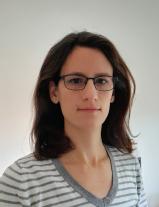 |
Dr Livia Bartok-PartayCore Team Member Livia dot Bartok-Partay at warwick dot ac dot uk Livia is interested in developing computational techniques to sample the potential energy landscape of atomistic systems, focusing on predicting phase transitions and finding thermodynamically stable structures in a range of materials from metals to molecular clusters. |
|
Dr Chris BradyResearch Software Engineer C dot S dot Brady at warwick dot ac dot uk |
|||
|
|
Dr Peter BrommerYear 1 and Year 2 Coordinator, Diversity Champion, Warwick Centre for Predictive Modelling, P dot Brommer at warwick dot ac dot uk “How far can we trust our models?” This is the question Peter tries to answer in his research, through the creation, validation and uncertainty quantification of atomistic models for fast molecular dynamics simulations, particularly in intermetallic systems. He is the main author of the potfit force matching code and a member of the openKIM project. |
 |
Dr Łukasz FigielIndustry Champion L dot W dot Figiel at warwick dot ac dot uk Lukasz is interested in predictive multiscale approaches for heterogeneous solids (e.g. composite materials) to provide a fresh insight into a fundamental relationship between their small-scale behaviour and macroscopic properties. |
|||
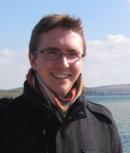 |
Prof. Scott HabershonCohort Mentor S dot Habershon at warwick dot ac dot uk Scott is interested in new methods to enable predictive modelling of chemical dynamics in complex systems. His research group develop tools for automatic reaction discovery to help understand catalytic reactions, design new approaches for automated molecular design, and develop new strategies for studying photochemical reaction mechanisms. |
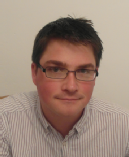 |
Prof. Nicholas HineDirector of Graduate Studies N dot D dot M dot Hine at warwick dot ac dot uk Nick's research focusses on theory and simulation of nanomaterials. He is a developer of the ONETEP Linear-Scaling Density Functional Theory Package, enabling realistic simulations of large systems comprising thousands of atoms, such as interfaces between 2D materials and spectroscopy of molecules in complex environments such as solvents and biomolecules. |
|||
 |
Dr Thomas HudsonCore Team Member T dot Hudson dot 1 at warwick dot ac dot uk Tom's research focuses on the theoretical basis for modelling materials systems, where he is interested in proving that models are well-defined, and that complex models can be accurately approximated analytically or computationally. Examples of techniques he has used and worked on in include: dynamical coarse-graining, stochastic homogenization, large deviations theory and Gamma-convergence. |
 |
Prof. Duncan LockerbySenior Mentor Duncan dot Lockerby at warwick dot ac dot uk Duncan's research interests lie in: multiscale modelling; microfluidics and nanofluidics; microscale (rarefied) gas dynamics; nanoscale flow phenomena, and fluctuating hydrodynamics. |
|||
 |
Prof. Reinhard MaurerCore Team Member R dot Maurer at warwick dot ac dot uk Reinhard’s research focuses on the quantum mechanical simulation of molecular reactions at surfaces. Application areas include heterogeneous photo and electrocatalysis, single molecule chemistry, molecular self-assembly, and organic electronics. His group develops and employs a combination of mixed quantum-classical dynamics methods, Density Functional Theory, and machine learning methods. |
|
Prof. Neophytos NeophytouCohort Mentor N dot Neophytou at warwick dot ac dot uk Dr. Neophytou is interested in theory, computational modelling and simulation of electronic and thermal transport in nanomaterials and nanodevices. In particular, he is interested in thermoelectric transport phenomena in complex band structure and nanostructured materials for energy conversion and generation applications. He is using semi-classical and quantum mechanical transport techniques, as well as atomistic methods, molecular dynamics, and DFT. |
|||
|
|
Dr Rebecca NotmanYear 3 and 4 Coordinator r dot notman at warwick dot ac dot uk Dr. Notman's research interests lie in the modelling and simulation of a range of systems that have important applications in materials science, biomedicine and pharmaceutical science. A particular focus of her current research is on understanding the molecular structure and organisation of the human skin barrier. |
|
Prof. David QuigleySenior Mentor d dot quigley at warwick dot ac dot uk David is interested in application of Monte-Carlo and other sampling techniques to problems in condensed matter physics. In particular his research focus is on calculating and understanding the structure, stability and growth mechanisms of organic solids and low dimensional crystals. He is director of the Scientific Computing Research Technology Platform (SCRTP), which provides a desktop research computing environment, high performance computing (HPC) facilities and access to research software engineering (RSE) for staff and students at Warwick. |
|||
 |
Dr Heather RatcliffeResearch Software Engineer Scientific Computing RTPLink opens in a new window h dot ratcliffe at warwick dot ac dot uk |
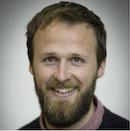 |
Prof. James SprittlesAdmissions and Outreach Team J dot E dot Sprittles at warwick dot ac dot uk James is interested in the computational modelling of technologically-relevant small-scale interfacial flows, with a focus on physics that goes beyond the classical fluid dynamics paradigm. |
|||
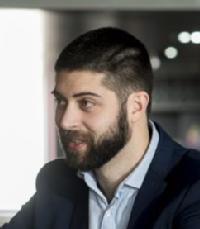 |
Dr Gabriele SossoCore Team Member G dot Sosso at warwick dot ac dot uk Gabriele is interested in disordered systems and phase transitions, particularly crystal nucleation and growth. His research is strongly multidisciplinary and involves a strong network of experimental as well as non-academic partners. Further information can be found at https://sossogroup.uk. Twitter: @SossoGroup |
 |
Dr Tim SullivanCore Team Member t dot j dot sullivan at warwick dot ac dot uk Tim's particular topics of interest include the theoretical foundations of UQ; non-parametric Bayesian statistics, including inverse problems in function spaces; optimisation-based methods and their relationship to Bayesian methods (e.g. maximum-a-posteriori estimation); and computational methods for applied statistical problems, including dimension reduction and kernel-based machine learning techniques. A point of particular recent focus is probabilistic perspectives on numerical methods themselves, which is an emerging blend of statistical inference and numerical analysis. |
|||
Administrative Team |
||||||
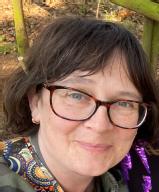 |
Sarah Jarratt (lead)PGT Administrative Officer hetsys at warwick dot ac dot uk |
 |
Victoria JelicicProgramme Manager |
|||

